Are you planning to start a vanilla growing business in Uganda or you're Vanilla importer, Cosmetics Manufacture, Ice cream Maker, Chocolate Manufacture, or Bakery owner looking for a reliable Vanilla supplier/Exporter from Africa?
If this describes you and/or your situation , then relax..., pick up a cup of coffee.., a Vanilla flavored Cake... and take your time to read through this Uganda Vanilla guide for some solutions!
On this Uganda agribusiness guide you will find useful information that will help you qualify an investment case for your vanilla business in Africa. You will also learn basics on how to grow and process vanilla beans on a large scale.
As a Vanilla Importer, you will be able to appreciate how organic vanilla in Uganda is grown and cured, and you will also be able to order/buy the right grade of vanilla beans for your clients.
Vanilla is a semi-terrestrial orchid, Vanilla fragrans syn. V. planifolia, a member of the ORCHIDACEAE family.
The sticks/beans of vanilla you buy in the shop are the pods, which have to be cured after harvesting.
According to Uganda history, pioneer farmers say that vanilla was introduced in Uganda during the colonial period by British farmers in Uganda as far back as the 1940s.
Salama Estate farm in Ntenjeru sub-county Mukono District was one of the three farms owned by British farmers where vanilla was grown.
In the late 1960s however, the British farmers experimented with an out-grower scheme involving a few farmers in the neighbouring Kooja parish as a strategy to increase production.
Kooja parish later became the pioneer and nucleus for vanilla production in Uganda, after the British farmers abandoned their farms and left the country due to unfavourable political conditions in the Adi Amin military regime.
On this Uganda Vanilla Guide you will find useful information and advice including videos on;
On this Uganda Vanilla guide you will be able to follow News Updates about the Vanilla industry and also ask questions about growing and buying vanilla in Uganda.
So, should you plunge into the vanilla plantation business in Africa?
Before considering to grow vanilla on a large scale, your first question is to find out whether you will have market for your product. Take a look at the global Vanilla Market:
"Vanilla is the second most expensive spice in the world, after saffron, due to highly labor-intensive methods of cultivation.
It is also only grown in a few places, such as Madagascar, Uganda, Mexico, Indonesia and China. It requires a warm tropical climate, making it vulnerable to disease and natural disasters. All of this combines to make the global vanilla market one of the world’s most volatile.
World vanilla prices experienced a massive spike after a 2000 cyclone devastated much of the East Asia crop. The sudden drop in supply pushed vanilla prices to nearly $500 per kilogram and led to a rush of new market entrants hoping to take advantage of the now lucrative crop. Too many farmers had the same idea, however, and the market quickly swung back into oversupply. By 2010, prices had dropped to as low as $25 per kg and there was worry about market collapse as farmers could barely earn enough to get by.
Today, vanilla prices are surging upwards again due to drought, fungal attacks and low prices driving many producers out of the market. Export Grade Vanilla could now sell $240-$300 per kg, and there are concerns about hoarding and a lack of supply."
As of December 2016 Cured Vanilla Beans in Uganda were selling between USD240-USD350 per Kg and the beans were relatively scarce. A 2017 Global Vanilla Market report by a Major Vanilla Supplier Nielsen-Massey predicts prices to remain high at around USD400-USD450/Kg for this year. The prediction is based on studying the Madagascar vanilla industry, the Island which produces about 80% of the vanilla beans on the global market.
The 2017 global market outlook for Vanilla Beans was made even more volatile going forward when on 7 March Cyclone Enawo made landfall over Sava Region Madagascar destroying nearly 1/3rd of the Vanilla Crop and Displacing over Half a Million people.
An article by the Financial Times on 24th April 2017 revealed that Vanilla Pods were trading at an All Time High price of USD600 per Kilogram.
According to an article published in March 2018 by The Globe & Mail, Vanilla prices hit another historical high of USD700 per Kg mark.
As of June 2019, a kilo of vanilla beans still costs more than a kilo of silver at source. The price of black whole-bean Madagascar vanilla, the benchmark product, costs $520 per kilo. This article from REUTERS gives some detail.
|
In Uganda today, most Vanilla farmers are locked into long term vanilla supply contracts with European buyers and you can hardly find a farmer without market for his Vanilla; so if you have to buy without a contract then you're likely to pay more than what he earns from the long term buyer.
Uganda today produces some of the finest Vanilla on the World Market and as such some companies have even branded vanilla from Uganda as GOLD:
UGANDA GOLD TM - The New "Gold Standard" in Gourmet Bourbon Vanilla Beans.
These beans are quite simply the finest gourmet Bourbon-style beans we are now seeing in the market - surpassing even the finest Madagascar Bourbon beans we carry. In fact, an independent testing laboratory has reported significantly higher vanillin content in Uganda vanilla beans than any reading we have seen to date on Madagascar beans. Amadeus Vanilla Beans, Los Angeles, Califonia USA
The global vanilla industry outlook clearly shows that Uganda grown vanilla is poised to become a significant player on the World Market.
This translates into more vanilla being sold from your Uganda plantaion, exported just like Coffee or Tea to bring in substantial additional income to your farm...!
Plan your vanilla plantation by Dividing the land and Creating shade
First, divide up your farm land into 3 Equal proportions; then plan a to mange your large vanilla plantation using a three-year rotation strategy.You crop on one (1) acre say for two (2) years and rest that portion for one (1)year, thus your 3 acre area would be split up into three one-acre sections.
Vanilla requires top shade. This could be provided by Maesopsis eminii (RHAMNACEAE family) trees, known locally in Luganda as "Musizi". These are tall, fast-growing African trees with straight lobes and a spreading canopy of small leaves which cast a light dappled shade, ideal for vanilla.
You can raise these trees in soil blocks and planted out 6m apart each way. The Musizi can grow more than a meter in six months. The correct amount of shade is important.
Farmers in Uganda have found out that Vanilla does not do well when there is too much shade; this excess shade tends to weaken the vines.
Plan for Support Trees for your Vanilla vines in Uganda
To support the vanilla vines, you can grow Jatropha curcas (EUPHORBIACEAE) or Physic nut trees. The Vanilla roots attach themselves to the rough bark of these trees and draw nourishment from the organic matter and moisture in the bark.
The Physic nut is a low-growing tree and easy to keep in check by slashing unwanted growth to regulate the shade. Thus your Vanilla vines will have living supports instead of white ant-susceptible posts.
Each tree can support two vines, one on either side but not looped over into adjacent trees.
Plant your support trees at 3m x 1m spacing.
A combination of the "Musizi" and Physic nut trees could prove easy to manage in your large scale vanilla plantation in Uganda.
Banana plantations have also been used successfully to provide the right amount of shade when intercroped with vanilla.
How to plant Vanilla in Uganda
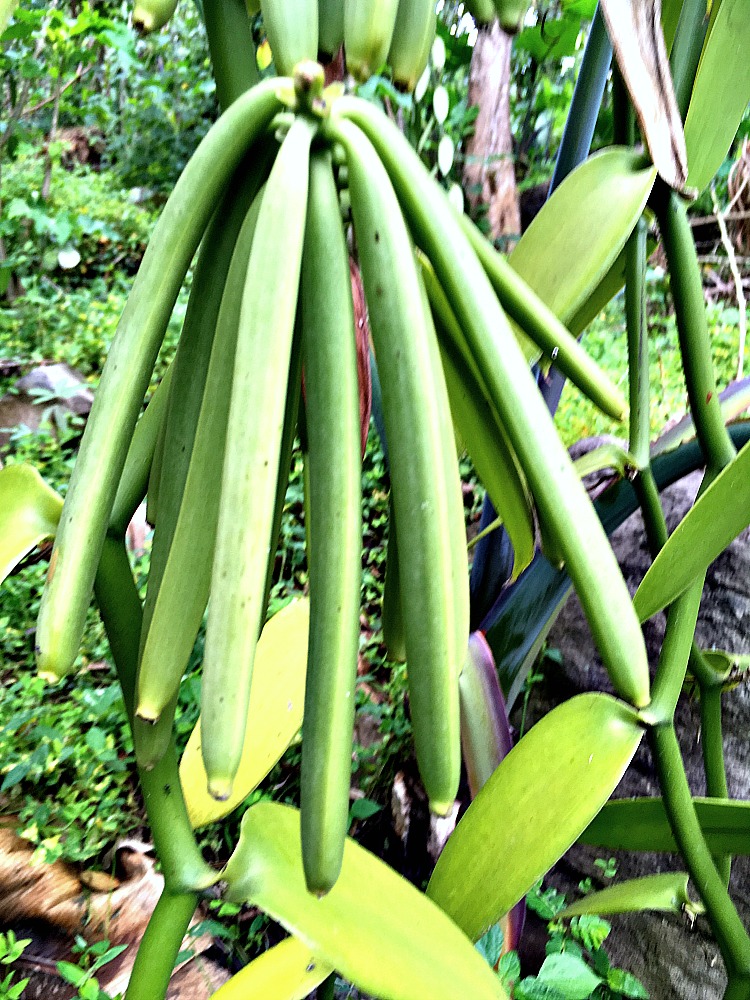
Take two-six-node cuttings of mature vegetative vine - not from the vine which has flowered. Two cuttings, one on either side, are planted up against the support trees with the bottom two nodes under the mulch - not in the soil, otherwise they tend to rot.
Additionally, Care should be taken that the basal cut end of the cutting is kept just above the surface to prevent it from rotting.
If necessary, you can tie with a string to the support trees. Use a string which will rot, not plastic twine.
In parts of the Uganda where Vanilla and Cocoa are grown, known as the 'fertile crescent' around the top end of Lake Victoria; it rains just about every week. You will likely have no need for irrigating.
vanilla can be raised either as a monocrop or intercrop. It’s usually trained on trellis or on low branching, rough barked trees.
The trees have to be planted well in advance at a spacing of 1.2-1.5m within rows and 2.5-3.0 m between rows. Approximately 1600 to 2000 trees can be accommodated in hectare.
Shade should be provided initially to the vines by planting banana or other suitable plants as we mentioned ealier.
The vanilla plant should be allowed to trail horizontally on poles tied to trees after trailing to height of 1.5-2.0 m.
Flowering will not occur as long as the vines climb upward.
You should plant your cuttings at the onset of rains in very shallow pits, filled with humus and mulch.
After planting, your vanilla will need about three years to reach maturity.
How to prun your Vanilla plants in Uganda
Shoots from the cutting will eventually grow up through the support trees and become pendulous. Flowers will form later from the axils of most leaves. The soft tips should be removed near ground level.
These can be taken to the nursery and rooted under shade in bags filled with fern fiber to supply your out-grower farmers for some additional income.
After the beans are harvested, the stem which has borne the pods should be cut back to allow a bud to grow near the support tree where there are plenty of aerial roots.
You should strive prune and pollinate your vanilla vines according to their vigor; DO NOT allow weaklings to bear fruit. Only vigorous, healthy vines should be brought into bearing, leaving only the amount of mature fruit wood that the vine is able to support.
When pruning, you must always think one year to 18 months ahead, at least under Uganda conditions. That is for the growth to form, flower, set and mature its pods.
How to control weeds on your Vanilla Plantation in Africa
Only slashing of the grass should be carried out between the rows and the trash piled up against the bases of your vanilla vines. Vanilla roots, after having descended the support trees travel along the surface of the ground beneath the mulch and across the rows under the mat of grass. Where trash/mulch is lacking your can bring in alternative cover like bagasse from sugar mills.
Mulching must be thick enough to, hopefully, control all weeds; No need for Round up or other artificial herbicides.
You can also orient your according to the intensity of weeds in in your vanilla field.
How to pollinate your vanilla vines in Uganda
Vanilla starts flowering in the 3rd year of planting, however it depends on the size of the original cutting used for planting. Maximum flower production will be seen in the 7th and 8th year of a plant.
In Uganda, vanilla flowering typically occurs in March-June and September-October. Because vanilla has no suitable pollinating insects or birds, you will have to pollinate your vines by hand if you want to harvest any bean.
You need to be fast and efficient since vanilla flowers last for only a day.
On a large African vanilla plantation you may need to employ a skilled person for this job almost on full-time basis if you want excellent results.
Using a pointed stick, transfer the pollen masses onto the surface of the stigma in each flower.
You can pollinate 5-10 flowers per raceme according to the vigour of each vanilla vine.
After pollination, Vanilla pods could take about six months to form.
How to Harvest and Process/Cure Vanilla in Uganda
Your vanilla pods will be ready for picking when the ends become slightly yellow.
After picking, the pods/beans dip in hot water at 65°C for two minutes; this process is done to kill any live tissues in the vanilla beans.
Let your heated beans drain, then lay the pods in lines on a cotton (not wool) blanket; research done in Uganda with different materials found cotton blankets to be the best.
The blanket is then folded over the pods and then rolled up. The rolls of blankets were placed on shelves in a dry, airy shed to allow the pods to sweat.
Unroll the blankets each day to expose the vanilla beans to the sun for a period of around half an hour. Repeat this until curing is finished.
The whole idea is to retain the juices in the pods and not to desiccate them.
Once cured, crystals of vanillin form on the outside of the pods which give off a pleasant vanilla odour.
After storage for about 3(three) months, you can pack your cured vanilla beans in tin boxes lined with silver paper and seal them off for export.
How to sort and grade your vanilla according to bean length
Size and appearance get the primary importance here, since; there is a direct relationship between the aroma (or vanillin content) and these factors. The beans are classified according to their length as follows:
- 15 cm and above is grade I
- 10-15 cm is grade II
- 10 cm is grade III
- Splits, cuts and damaged beans are grade IV
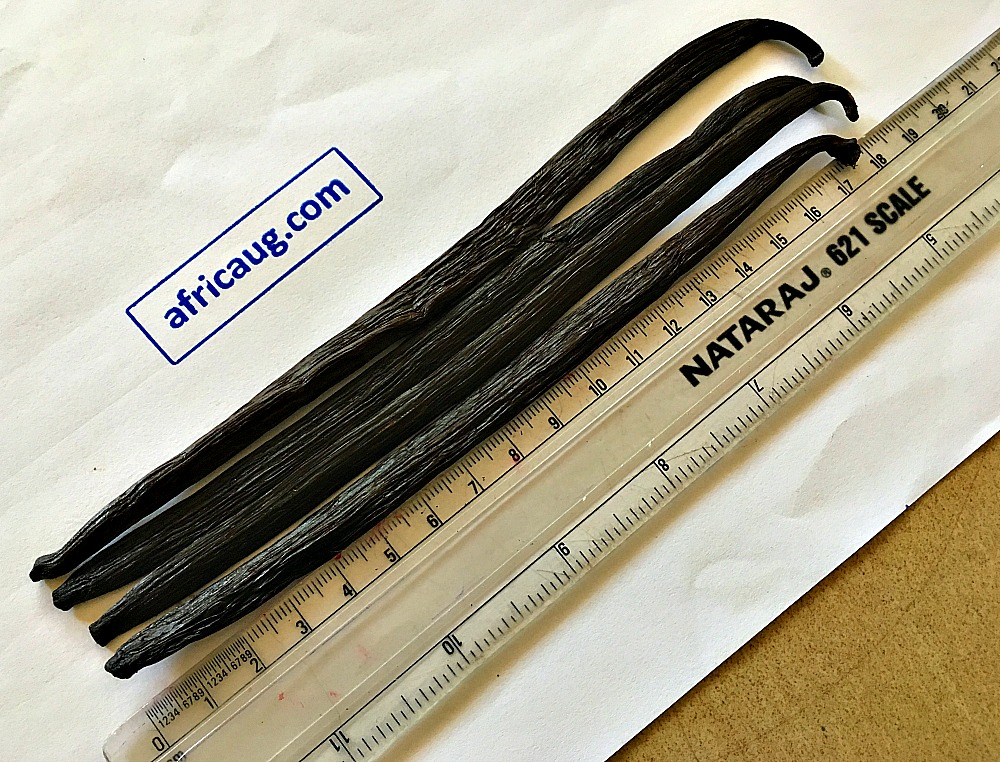 |
| Top Grade 17-19cm Vanilla Bean in Uganda. These long beans in our stock take the longest time to cure/dry but give the highest Vanillin Content. They don't easily mold & are heavy! |
How to grade your Vanilla according moiture;
Grade A and Grade B Vanilla Beans
This grading of vanilla is meant to cartegorise vanilla according to the moisture content and the possible end use of the vanilla beans.
Grade A Vanilla which is also known as the Gourmet Grade or Prime vanilla beans have a higher moisutre content and are normally used in cooking.The moisture content in Grade A vanilla is around 30% and these beans have plenty of caviar to scrape out. Grade A vanilla beans look very dark in color, pliable and moist.
Grade B vanilla is the Extract Grade ; these beans cured slightly differently and have a moisture content of around 20%. Grade B vanilla beens have a deep reddish-black coloration, and may have slight splits or cuts along the bean. They are very aromatic, but are noticeably drier than the other Grades.
Quick Tips for growing and processing quality Vanilla in Uganda
- To get quality and sustainable yield, organic farming technique should to be adopted.
- Get a cutting of at least 6 nodes; wrap it in a dump paper towel to keep it moist until you can plant it.
- Spade up some little soil and add several handfuls of compost.
- Remove the lowest two leaves from the cutting.
- Insert the base of the cutting into the loose soil beneath the tree.
- Then cover the two bottom nodes of the cutting with soil and pack it tightly around them.
- Push a plant stake behind the orchid cutting and tie the cutting.
- Water the plant to supply moisture (If in dry season). Be sure to mulch the soil around to conserve moisture.
- Curing of green beans is to be commenced within a week of harvest, when they have rippened.
- Matured, light green with tinge of yellow coloured beans are to be harvested individually, avoid broom harvesting.
- For heat killing, temperature of water should not exceed 65-70 Degrees Centigrade.
- Initial sweating is done for 24 to 48 hours. Extension of this period will initiate rotting.
- Daily sun drying is to be followed by proper sweating for controlled fermentation.
- Examine your Vanilla beans daily during sun drying and slow drying to avoid infection.
- Molds, if noticed, has to be removed from time to time. Keep molded Vanilla beans away from the good Vanilla beans.
- As in the previous steps, regularly check your vanilla Beans during conditioning to avoid any infection.
How to Buy Ugandan Vanilla Beans in Bulk
Often times we're approached by new Vanilla Buyers and flavor Enthusiast who want to by freshly Cured Vanilla Beans instantly; but to the disappointment of some we say, there is no Cured Vanilla Beans for you at this time.
Grade A Vanilla Beans
Now Available in Bulk
So, then how can you buy Ugandan Vanilla Beans in Bulk?
The answer comes from appreciating the fact that green Ugandan Vanilla Beans are harvested mainly in two seasons of the year.
To buy Vanilla Beans in Bulk from us therefore, you will need to make a confirmed Order before each vanilla harvest season such that when we're preparing to cure the green vanilla beans for a particular season your beans are included.
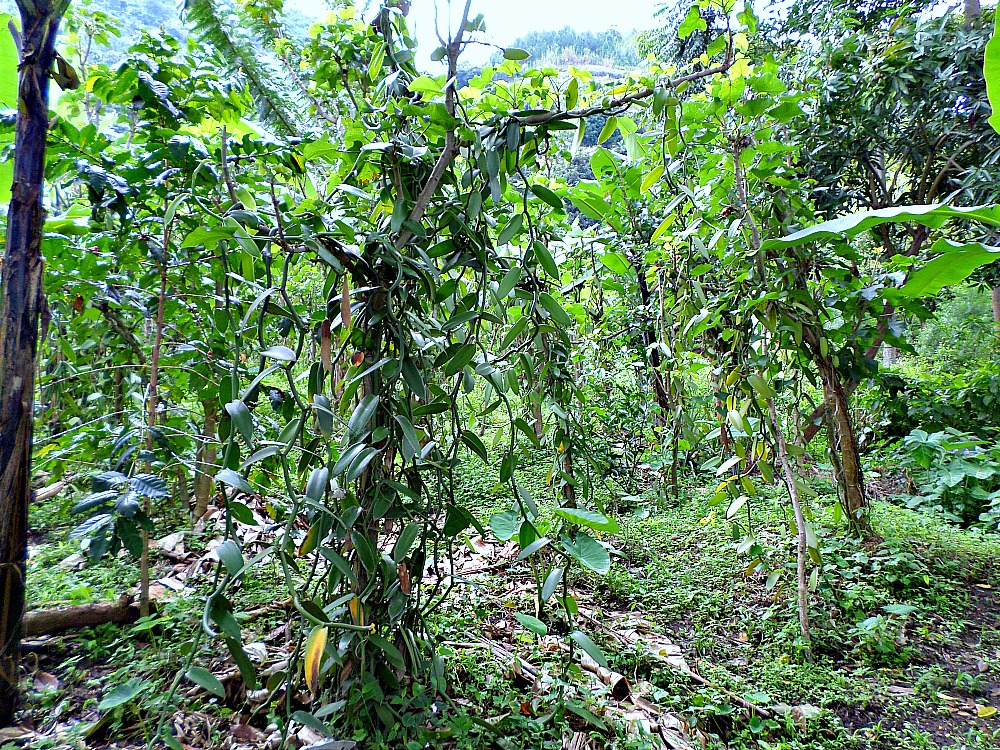
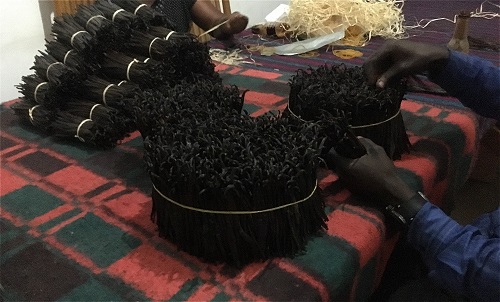
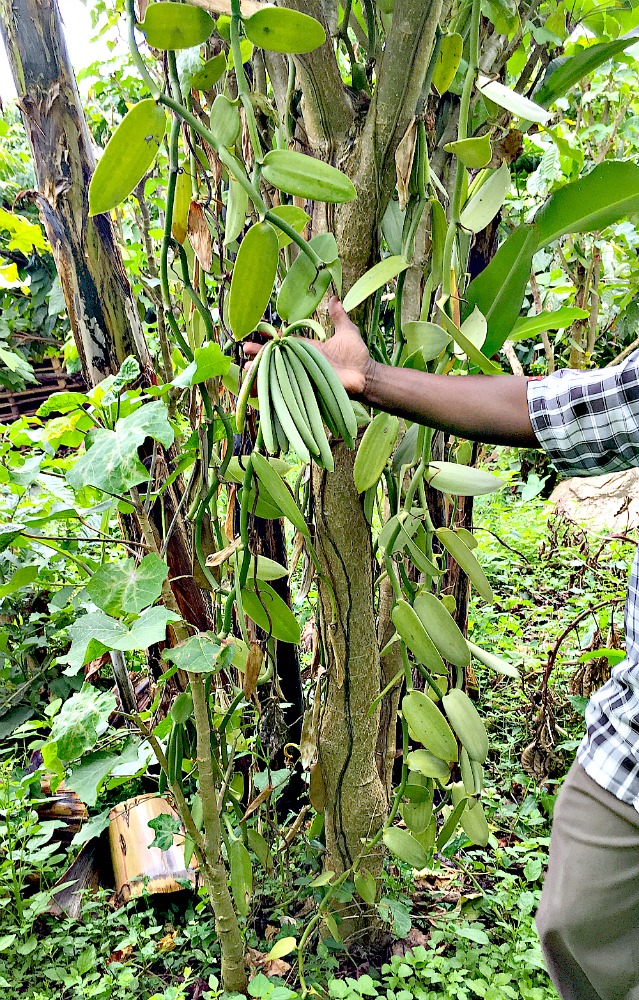
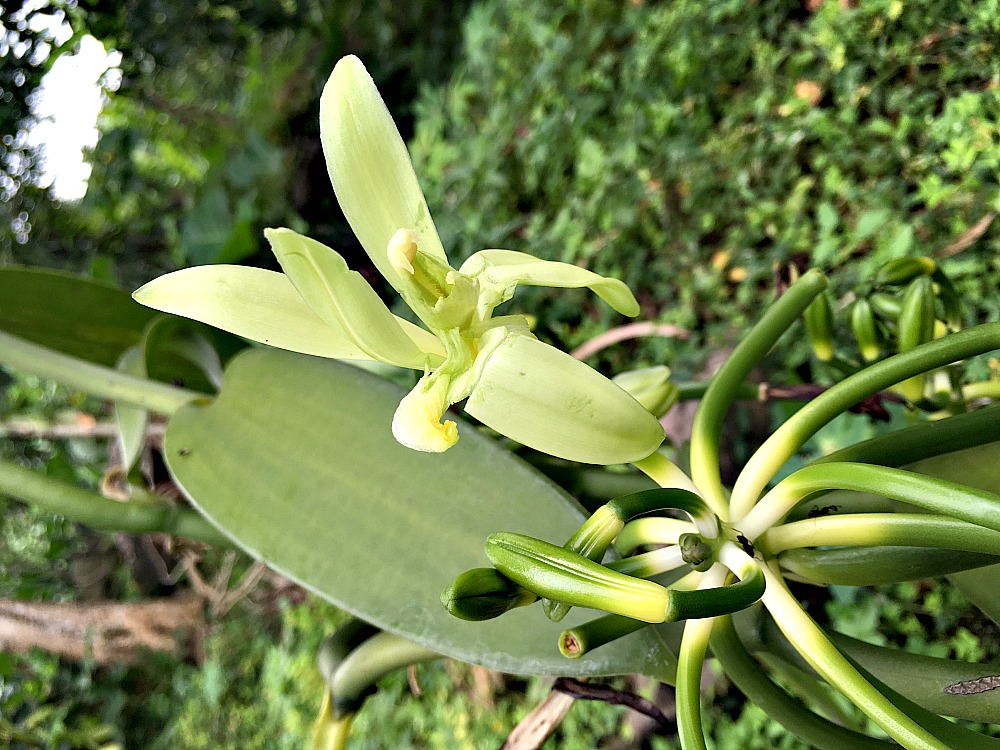
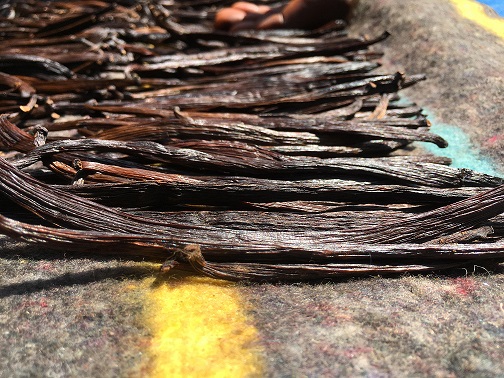
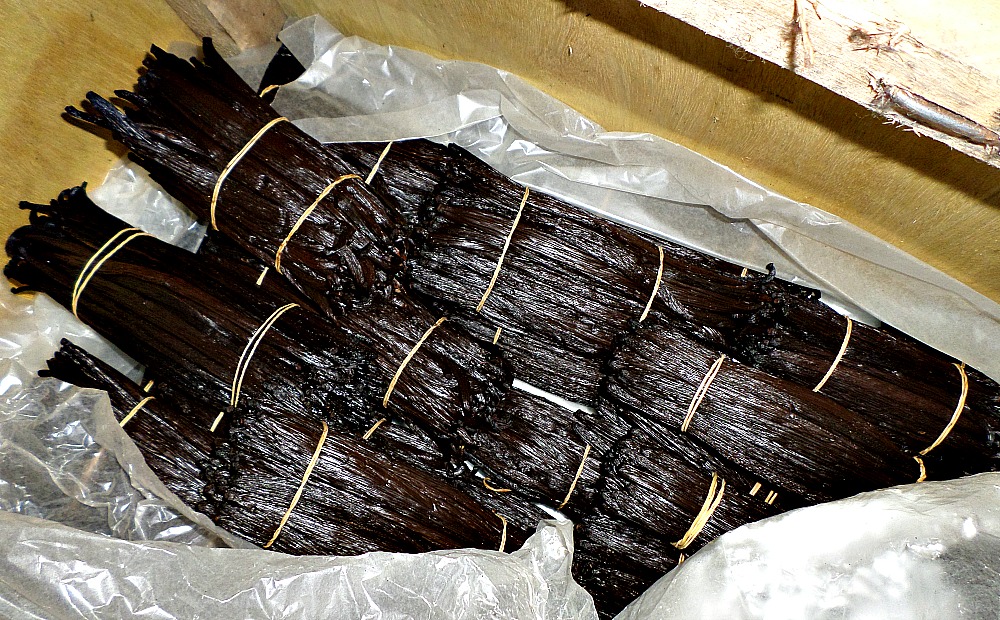
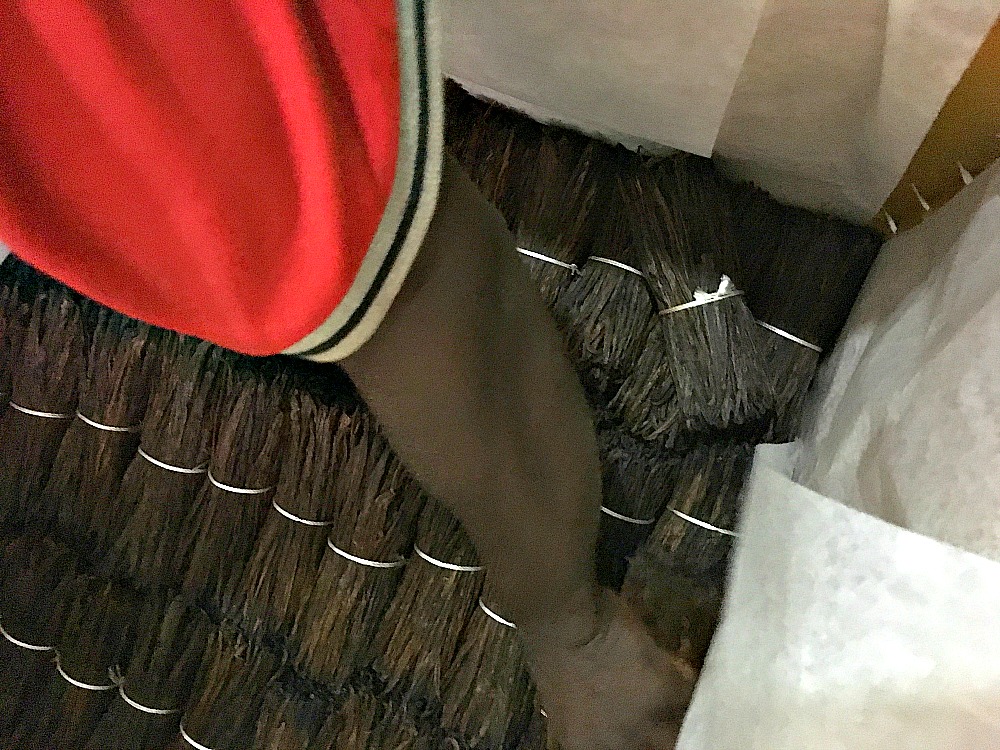
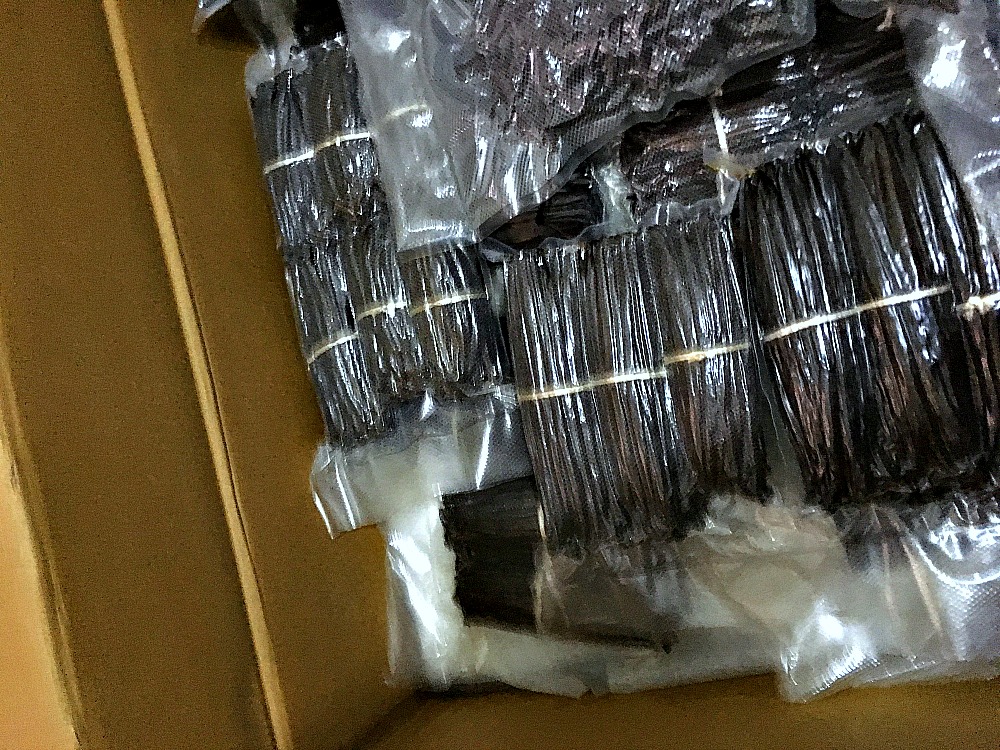
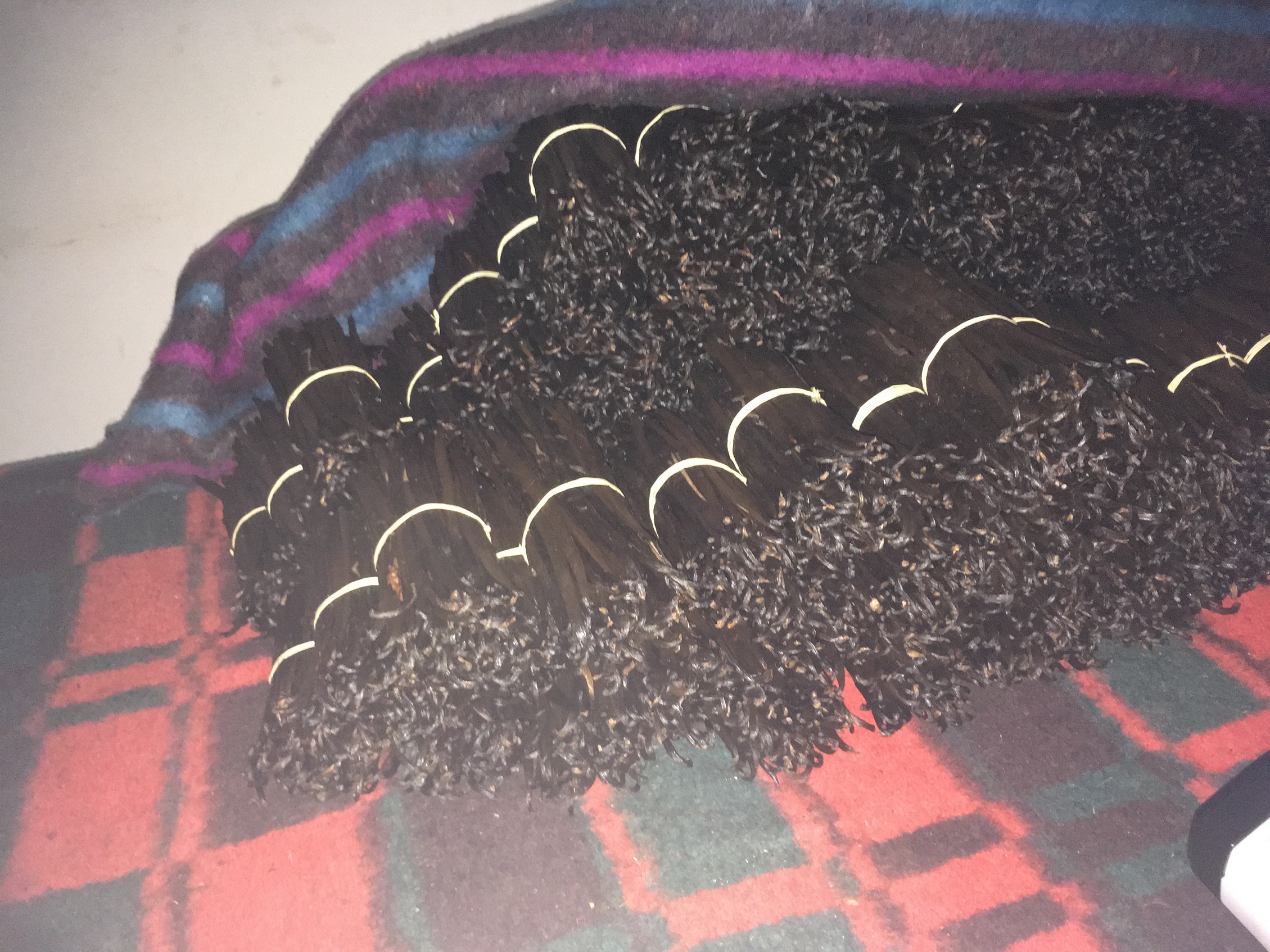
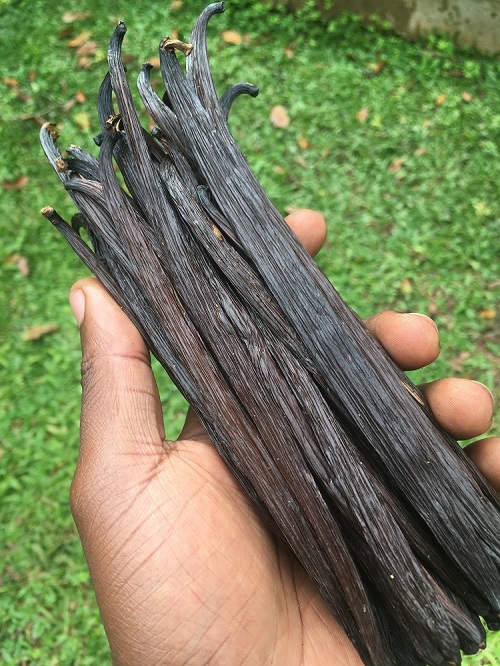
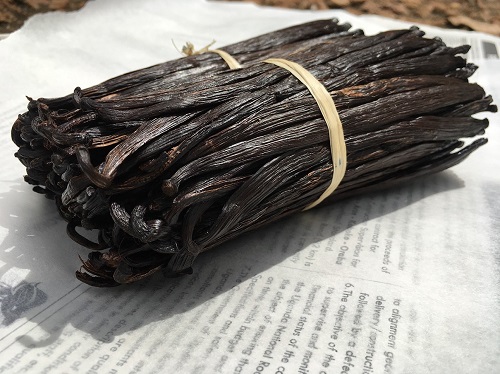
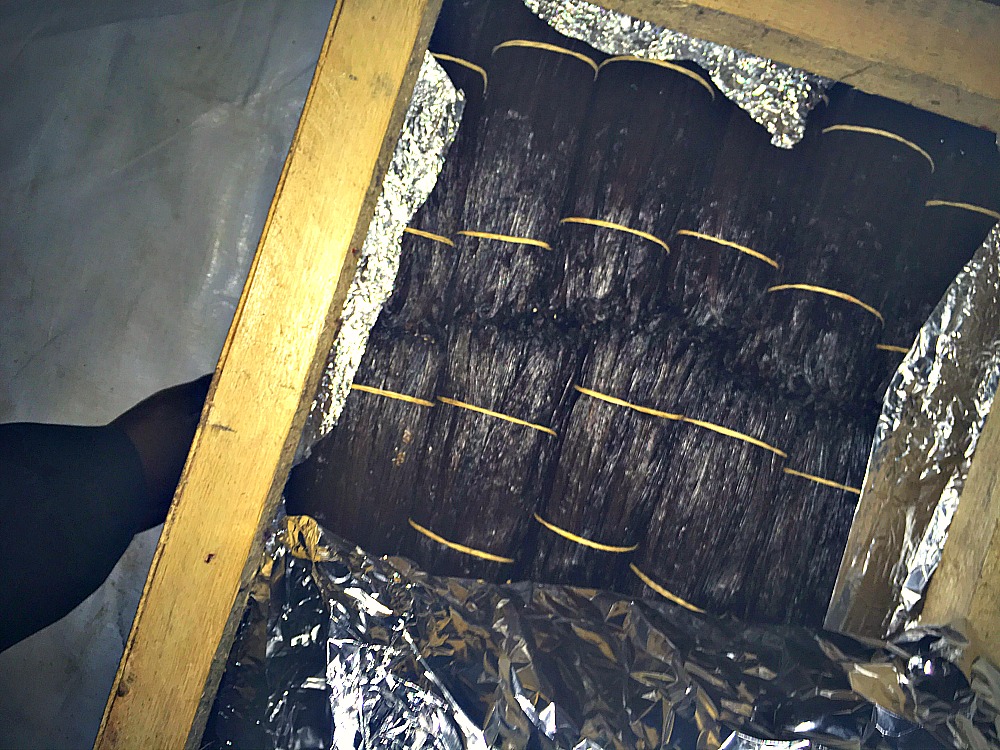



No comments:
Post a Comment